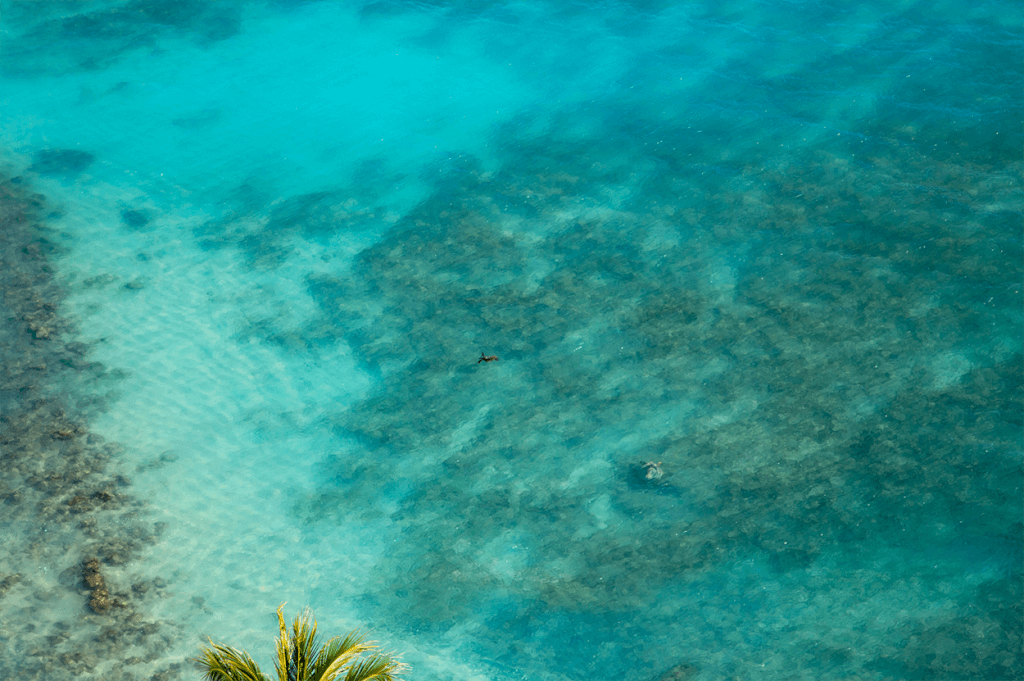Demand for access to one of Oahu’s most coveted natural sites remains far above its capacity. As a result, and to bolster maintenance and conservation funds, the Hanauma Bay entry fee more than doubles beginning on Thursday, July 1, 2021.
If you didn’t already know, Hawai’i is experiencing a massive surge in visitors. Arrival numbers are surpassing anything anyone could’ve ever hoped for. But, with more visitors making their way to the islands than before the pandemic – and we’re talking mostly domestic visitors still – our resources are feeling the strain. This is true at one if Oahu’s premier visitor attractions too – Hanauma Bay.
When Hanauma Bay reopened back in December, a capacity limit of 720 people per day and 120 people per hour was in place. That was later expanded to 1,600 people per day and 240 people per hour. Yet, even with a new entry fee and online reservation, conditions around the bay remained chaotic. Sure, it’s not as bad as the 3,000 visitors the bay saw per day in 2019. But, still. Drive by in the morning, and it can be quite the scene.

Hanauma Bay Entry Fee More Than Doubles
To keep up with maintenance, and, perhaps, in an effort to help control crowds, the general admission fee at Hanauma Bay is increasing from $12 to $25 per person. This change begins on Thursday, July 1. That’s more than double the existing fee.
What’s not changing, however, are the current parking fees, which remains at $3 for visitors and $1 for residents with a valid Hawai’i ID. Free entry also remains for kama’aina with valid ID, anyone ages 12 and under, and all active duty military with valid ID.
It’s also worth noting that even if you can’t score an online reservation, you still have another chance to get in. 25% of the bay’s capacity is reserved for walk-ins.
Final Thoughts
I know no one wants to pay more fees, especially on vacation. But, clearly, the demand for Hanauma Bay far outstrips what the bay can handle. So why not try to curtail demand a little and generate additional funds for conservation and maintenance. Plus, for visitors and kama’aina alike, the experience should improve. No one likes dealing with large crowds of people. Additionally, the pandemic has shown us that those annoying crowds also chase away the fish. So, not only will you have a calmer experience, but a more enriching one too.

So they pulled a Disney…
Charge more to reduce the number of people going.
Don’t blame them (both Haunama Bay and Disney), too much demand makes it a miserable experience for anyone actually there.
Maybe an improvement would be to hold lotteries for lower cost tickets for low income people so they can at least get a shot at enjoying it while hanging out with those who can afford it.
Basically. The lottery is a good idea, that may be too complicated for our officials to pull off… lol
Really disappointed in the ongoing and increasing price discrimination against tourists. It’s almost like Hawaiian residents want to keep tourists to Hawaii confined to certain lousy touristy areas. I personally enjoy going to local beaches, staying in local areas, and hanging out with locals. It’s getting much much harder to do with the advent of this type of discrimination. I would love to move to Hawai’i but can’t yet for financial reasons. I may not return until I’m ready to stay and get a HDL.
At least here on Oahu, they’re targeting specific, overburdened areas only. Many fantastic hikes, beaches, etc., remain completely free. Though, in the case of places like Lanikai, you won’t be able to visit for other reasons such as a lack of parking + overcrowding. It’s a delicate balancing act that is starting to play out these days. Our inept government doesn’t help either. That’s why, aside from California, Hawaii is one of the few states where more people leave than move in.
I was there last week. What a colossal disappointment. Why would anyone waste the time and effort? There are almost no fish and all of the coral is dead. I was there decades ago and it was fabulous.
Decades ago, there were far fewer visitors (and by visitors, I mean locals and tourists), which means far less impact to the delicate ecosystem there. Your experience suggests that additional controls are needed along with more restoration.